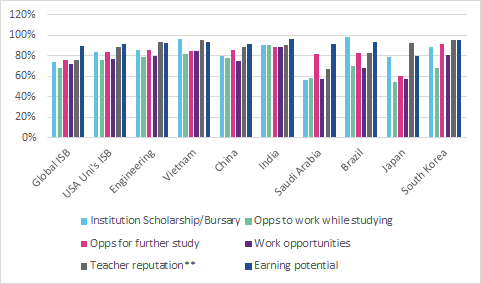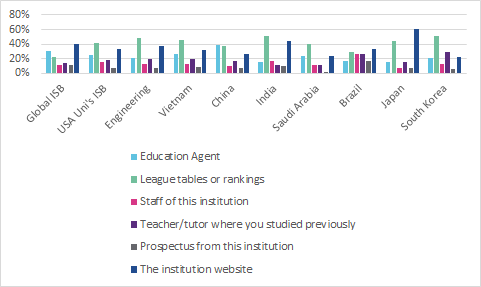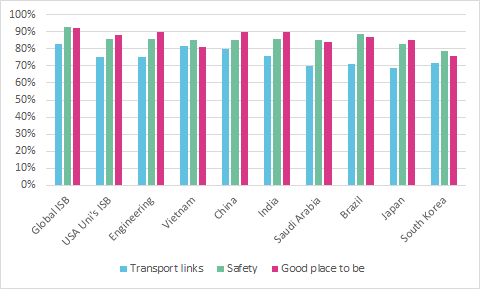United States Higher Education institutions are experiencing a decline in new international student enrolment not seen since the three years immediately following the terrorist attacks of September 11th. As easy as it might be to jump on a handful of contributing factors, a deeper understanding of the nuances of international student decision making starts to paint an interesting picture and one that gives institutions more of a measure of control when it comes to influencing the desired upturn.
Speaking with International Education professionals in the United States, the refrain heard most frequently is that the Trump Administration’s anti-immigrant rhetoric and policies are having an out-sized negative impact on their institutions’ international student recruitment efforts. While this is undoubtedly having some impact, especially with recruitment efforts in countries that have been directly targeted by the Administration, there are several more compelling systemic explanations for why this new enrolment decline may be occurring: uncertainty over immigration policies and regulations; the rising costs of education; increased competition from other English-speaking HEIs; employment opportunity in emerging markets; increase of non-U.S. HEI’s ranked in the top 200 of all major global indices (especially in the STEM fields); and strength of the Dollar to name several.
What makes the current decline unique is that unlike the first two years after 9/11 the overall enrolment numbers for international students following the Trump election are up, albeit slightly (+.05 for 2018/19, IIE, Open Doors 2019). It is important to mention however that this increase is due to unprecedented numbers (20% of overall international student enrolment!) of graduating students electing to extend their visa status in the United States through Optional Practical Training (OPT) which is temporary, discipline-related employment. So, the headline masks the underlying reality.
In order to correct this downward trend, International Educators will need to move beyond anecdotal information and start collecting data to identify the underlying causes and determine which are fixable and which are beyond our control.
The International Student Barometer is one tool that has helped Higher Education institutions in the U.S. and abroad collect data-driven insight into why international students choose to study at a particular institution and what resources they use to help validate that decision.
Interestingly, when reviewing ISB data from 2018, international students in the U.S. communicated an outsized focus on opportunities for further study, work opportunity and funding which seems to corroborate the U.S. OPT trend. The chart below demonstrates that compared with their peers in other countries, U.S. international students were many percentage points higher in the perception of importance of institutional scholarship, opportunities to work, teacher reputation and future earning potential.

When evaluating tools or resources that helped influence choice, the U.S. ISB results are highly centered on global rankings and extensions of the university’s legacy in the region through American-educated faculty and direct institutional outreach. It is important to note in the context of an overall decline in new student enrolment as these are resource intensive recruitment methods which eat into margin and make competitive pricing and student incentives difficult to leverage. Comparatively, the rest of the world relies more heavily on low-cost, market-driven tools such as agents, collateral and websites.

Lastly, and most interestingly, the ISB points to environmental factors which may be contributing to this decline in enrolment but do not feature in the Open Doors data. Primarily, infrastructure and personal safety and how they impact perception of overall quality of life.

There is obviously much to be researched and this piece is by no means meant to be interpreted as a thorough explanation for the decline in new international student enrolment in the United States. What we hope though, is that this begins an important conversation among U.S. International Education professionals and that it ideally leads to opportunities for collaboration as this is not a problem that our government nor individual institutions are likely to solve alone. Having the independent data to support those discussions is just the start.
To find out how your institution can be involved in the International Student Barometer 2020, download your Essential Information:
As institutions globally rethink how they deliver education and the wider student experience, they continue to listen to the student voice. As such,...
The Covid-19 pandemic has brought global disruption to the Higher Education sector, severely impacting the functioning of international partnerships....
We take a look at how German higher education institutions performed in terms of internationalisation in the academic year 2016-17. Results are from...